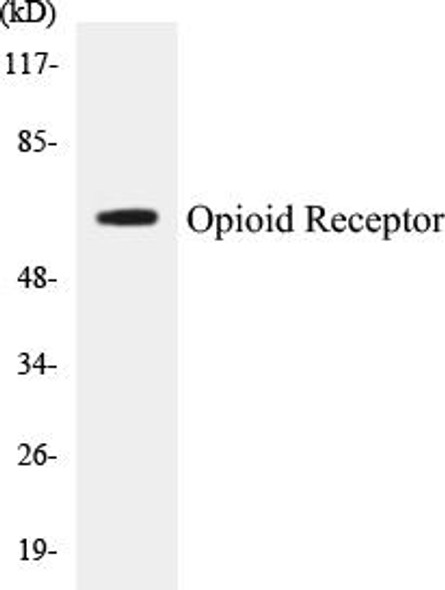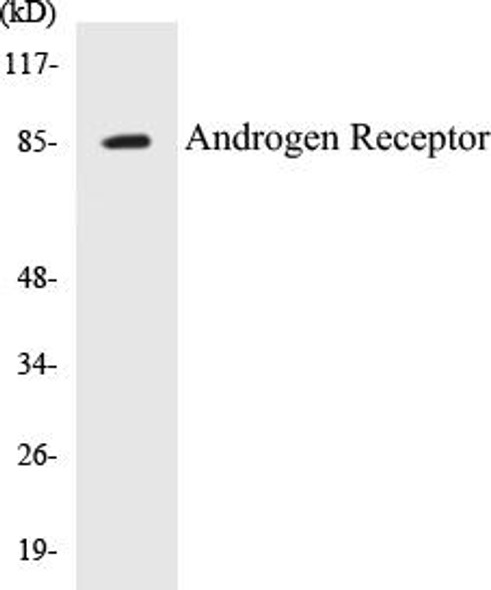Adrenergic Receptor beta2 Colorimetric Cell-Based ELISA Kit (CBCAB00516)
- SKU:
- CBCAB00516
- Product Type:
- ELISA Kit
- ELISA Type:
- Cell Based
- Reactivity:
- Human
- Detection Method:
- Colorimetric
Description
Adrenergic Receptor beta2 Colorimetric Cell-Based ELISA Kit
The Adrenergic Receptor Beta2 Colorimetric Cell-Based ELISA Kit is a highly sensitive and specific assay designed for the accurate detection of beta2 adrenergic receptor levels in cell culture samples. This kit offers reliable and reproducible results, making it an essential tool for researchers studying the role of beta2 adrenergic receptors in various physiological processes.The beta2 adrenergic receptor is a key player in regulating the body's response to adrenaline and other stress hormones. Dysregulation of this receptor has been implicated in a variety of diseases, including asthma, COPD, and heart failure.
By accurately measuring beta2 adrenergic receptor levels, researchers can gain valuable insights into the underlying mechanisms of these diseases and potentially identify new therapeutic targets.Whether you are investigating the role of beta2 adrenergic receptors in cardiovascular health, respiratory diseases, or other physiological processes, the Adrenergic Receptor Beta2 Colorimetric Cell-Based ELISA Kit is a valuable tool for your research needs. Trust in its high sensitivity, specificity, and reproducibility to deliver accurate and reliable results for your studies.
| Product Name: | Adrenergic Receptor beta2 Colorimetric Cell-Based ELISA Kit |
| Product Code: | CBCAB00516 |
| ELISA Type: | Cell-Based |
| Target: | Adrenergic Receptor beta2 |
| Reactivity: | Human |
| Dynamic Range: | > 5000 Cells |
| Detection Method: | Colorimetric 450 nmStorage/Stability:4°C/6 Months |
| Format: | 96-Well Microplate |
The Adrenergic Receptor beta2 Colorimetric Cell-Based ELISA Kit is a convenient, lysate-free, high throughput and sensitive assay kit that can detect Adrenergic Receptor beta2 protein expression profile in cells. The kit can be used for measuring the relative amounts of Adrenergic Receptor beta2 in cultured cells as well as screening for the effects that various treatments, inhibitors (ie siRNA or chemicals), or activators have on Adrenergic Receptor beta2.
Qualitative determination of Adrenergic Receptor beta2 concentration is achieved by an indirect ELISA format. In essence, Adrenergic Receptor beta2 is captured by Adrenergic Receptor beta2-specific primary antibodies while the HRP-conjugated secondary antibodies bind the Fc region of the primary antibody. Through this binding, the HRP enzyme conjugated to the secondary antibody can catalyze a colorimetric reaction upon substrate addition. Due to the qualitative nature of the Cell-Based ELISA, multiple normalization methods are needed:
| 1. | A monoclonal antibody specific for human GAPDH is included to serve as an internal positive control in normalizing the target absorbance values. |
| 2. | Following the colorimetric measurement of HRP activity via substrate addition, the Crystal Violet whole-cell staining method may be used to determine cell density. After staining, the results can be analysed by normalizing the absorbance values to cell amounts, by which the plating difference can be adjusted. |
| Database Information: | Gene ID: 154, UniProt ID: P07550, OMIM: 109690, Unigene: Hs.2551 |
| Gene Symbol: | ADRB2 |
| Sub Type: | None |
| UniProt Protein Function: | ADRB2: Beta-adrenergic receptors mediate the catecholamine- induced activation of adenylate cyclase through the action of G proteins. The beta-2-adrenergic receptor binds epinephrine with an approximately 30-fold greater affinity than it does norepinephrine. Belongs to the G-protein coupled receptor 1 family. Adrenergic receptor subfamily. ADRB2 sub-subfamily. |
| UniProt Protein Details: | Protein type:Receptor, GPCR; Membrane protein, multi-pass; GPCR, family 1; Membrane protein, integral Chromosomal Location of Human Ortholog: 5q31-q32 Cellular Component: lysosome; integral to plasma membrane; apical plasma membrane; plasma membrane; nucleus; receptor complex; endosome Molecular Function:protein binding; protein homodimerization activity; potassium channel regulator activity; beta2-adrenergic receptor activity; norepinephrine binding; adenylate cyclase binding Biological Process: arrestin mediated desensitization of G-protein coupled receptor protein signaling pathway; receptor-mediated endocytosis; diet induced thermogenesis; transmembrane receptor protein tyrosine kinase activation (dimerization); negative regulation of multicellular organism growth; regulation of vasodilation; adenylate cyclase activation; regulation of sodium ion transport; positive regulation of bone mineralization; G-protein signaling, adenylate cyclase activating pathway; G-protein signaling, coupled to cAMP nucleotide second messenger; cell surface receptor linked signal transduction; positive regulation of MAPKKK cascade; positive regulation of protein ubiquitination; heat generation; negative regulation of smooth muscle contraction; brown fat cell differentiation; endosome to lysosome transport; positive regulation of transcription from RNA polymerase II promoter; response to cold; norepinephrine-epinephrine vasodilation involved in regulation of systemic arterial blood pressure; bone resorption Disease: Obesity; Asthma, Susceptibility To |
| NCBI Summary: | This gene encodes beta-2-adrenergic receptor which is a member of the G protein-coupled receptor superfamily. This receptor is directly associated with one of its ultimate effectors, the class C L-type calcium channel Ca(V)1.2. This receptor-channel complex also contains a G protein, an adenylyl cyclase, cAMP-dependent kinase, and the counterbalancing phosphatase, PP2A. The assembly of the signaling complex provides a mechanism that ensures specific and rapid signaling by this G protein-coupled receptor. This gene is intronless. Different polymorphic forms, point mutations, and/or downregulation of this gene are associated with nocturnal asthma, obesity and type 2 diabetes. [provided by RefSeq, Jul 2008] |
| UniProt Code: | P07550 |
| NCBI GenInfo Identifier: | 296439450 |
| NCBI Gene ID: | 154 |
| NCBI Accession: | P07550.3 |
| UniProt Secondary Accession: | P07550,O14823, O14824, O14825, O14826, Q4JG18, Q53GA6 Q6GMT4, Q6P4D8, Q8NEQ9, B0LPE4, B2R7X2, |
| UniProt Related Accession: | P07550 |
| Molecular Weight: | 46,459 Da |
| NCBI Full Name: | Beta-2 adrenergic receptor |
| NCBI Synonym Full Names: | adrenoceptor beta 2, surface |
| NCBI Official Symbol: | ADRB2 |
| NCBI Official Synonym Symbols: | BAR; B2AR; ADRBR; ADRB2R; BETA2AR |
| NCBI Protein Information: | beta-2 adrenergic receptor; beta-2 adrenoceptor; beta-2 adrenoreceptor; catecholamine receptor; adrenergic, beta-2-, receptor, surface |
| UniProt Protein Name: | Beta-2 adrenergic receptor |
| UniProt Synonym Protein Names: | Beta-2 adrenoreceptor |
| Protein Family: | Beta-2 adrenergic receptor |
| UniProt Gene Name: | ADRB2 |
| UniProt Entry Name: | ADRB2_HUMAN |
| Component | Quantity |
| 96-Well Cell Culture Clear-Bottom Microplate | 2 plates |
| 10X TBS | 24 mL |
| Quenching Buffer | 24 mL |
| Blocking Buffer | 50 mL |
| 15X Wash Buffer | 50 mL |
| Primary Antibody Diluent | 12 mL |
| 100x Anti-Phospho Target Antibody | 60 µL |
| 100x Anti-Target Antibody | 60 µL |
| Anti-GAPDH Antibody | 60 µL |
| HRP-Conjugated Anti-Rabbit IgG Antibody | 12 mL |
| HRP-Conjugated Anti-Mouse IgG Antibody | 12 mL |
| SDS Solution | 12 mL |
| Stop Solution | 24 mL |
| Ready-to-Use Substrate | 12 mL |
| Crystal Violet Solution | 12 mL |
| Adhesive Plate Seals | 2 seals |
The following materials and/or equipment are NOT provided in this kit but are necessary to successfully conduct the experiment:
- Microplate reader able to measure absorbance at 450 nm and/or 595 nm for Crystal Violet Cell Staining (Optional)
- Micropipettes with capability of measuring volumes ranging from 1 µL to 1 ml
- 37% formaldehyde (Sigma Cat# F-8775) or formaldehyde from other sources
- Squirt bottle, manifold dispenser, multichannel pipette reservoir or automated microplate washer
- Graph paper or computer software capable of generating or displaying logarithmic functions
- Absorbent papers or vacuum aspirator
- Test tubes or microfuge tubes capable of storing ≥1 ml
- Poly-L-Lysine (Sigma Cat# P4832 for suspension cells)
- Orbital shaker (optional)
- Deionized or sterile water
*Note: Protocols are specific to each batch/lot. For the correct instructions please follow the protocol included in your kit.
| Step | Procedure |
| 1. | Seed 200 µL of 20,000 adherent cells in culture medium in each well of a 96-well plate. The plates included in the kit are sterile and treated for cell culture. For suspension cells and loosely attached cells, coat the plates with 100 µL of 10 µg/ml Poly-L-Lysine (not included) to each well of a 96-well plate for 30 minutes at 37°C prior to adding cells. |
| 2. | Incubate the cells for overnight at 37°C, 5% CO2. |
| 3. | Treat the cells as desired. |
| 4. | Remove the cell culture medium and rinse with 200 µL of 1x TBS, twice. |
| 5. | Fix the cells by incubating with 100 µL of Fixing Solution for 20 minutes at room temperature. The 4% formaldehyde is used for adherent cells and 8% formaldehyde is used for suspension cells and loosely attached cells. |
| 6. | Remove the Fixing Solution and wash the plate 3 times with 200 µL 1x Wash Buffer for five minutes each time with gentle shaking on the orbital shaker. The plate can be stored at 4°C for a week. |
| 7. | Add 100 µL of Quenching Buffer and incubate for 20 minutes at room temperature. |
| 8. | Wash the plate 3 times with 1x Wash Buffer for 5 minutes each time. |
| 9. | Add 200 µL of Blocking Buffer and incubate for 1 hour at room temperature. |
| 10. | Wash 3 times with 200 µL of 1x Wash Buffer for 5 minutes each time. |
| 11. | Add 50 µL of 1x primary antibodies (Anti-Adrenergic Receptor beta2 Antibody and/or Anti-GAPDH Antibody) to the corresponding wells, cover with Parafilm and incubate for 16 hours (overnight) at 4°C. If the target expression is known to be high, incubate for 2 hours at room temperature. |
| 12. | Wash 3 times with 200 µL of 1x Wash Buffer for 5 minutes each time. |
| 13. | Add 50 µL of 1x secondary antibodies (HRP-Conjugated AntiRabbit IgG Antibody or HRP-Conjugated Anti-Mouse IgG Antibody) to corresponding wells and incubate for 1.5 hours at room temperature. |
| 14. | Wash 3 times with 200 µL of 1x Wash Buffer for 5 minutes each time. |
| 15. | Add 50 µL of Ready-to-Use Substrate to each well and incubate for 30 minutes at room temperature in the dark. |
| 16. | Add 50 µL of Stop Solution to each well and read OD at 450 nm immediately using the microplate reader. |
(Additional Crystal Violet staining may be performed if desired – details of this may be found in the kit technical manual.)






